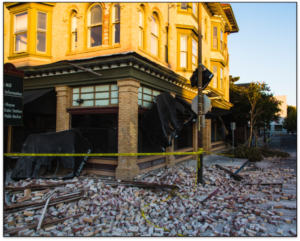
A new study published in the January 2022 edition of the journal Earthquake Spectra examines risk communication in Metropolitan Portland, OR. This represents the work of several HCRI leadership members: Executive Director and HCRI Co-Founder Dr. Brittany Brand; Community Engagement Coordinator and HCRI Co-Founder Dr. Carson MacPherson-Krutsky; as well as Professor Emeritus and HCRI Advisory Board Member Dr. Mike Lindell.
Project Overview:
A Cascadia Subduction Zone (CSZ) earthquake will induce significant shaking that lasts for 3-5 minutes and result in widespread damage along the Pacific Northwest (PNW) coast of the United States. It is, therefore, crucial to understand how to reduce future impacts across this region and assess current levels of household preparedness. This paper examines how prepared residents in Portland, Oregon metropolitan (PDX) region are for a CSZ and compares those preparedness levels to other PNW regions using similar data from multiple surveys over a 20-year time interval. We find that 63% of PDX residents do not intend to ‘‘Drop, Cover, and Hold On’’ (DCHO) (the recommended action) when earthquake shaking starts and that, although residents are generally aware of earthquake hazards in the area, they are less aware of the specific risks for their homes. Furthermore, PDX residents’ preparedness levels seem to be comparable to those recently surveyed in Washington, but somewhat less than those surveyed two decades ago in California, though more comprehensive data are needed to verify these results. We also find that people rate risk information provided by emergency managers and their websites as more accurate, understandable, relevant, and new than other sources. Our results suggest that significant gaps remain in translating broad awareness of the CSZ earthquake into personal knowledge and preparedness. This work provides guidance to PDX emergency educators for more targeted messaging and provides methods to measure preparedness variables in other regions for future comparisons. By paying close attention to preparedness gaps, local officials can use their limited resources more effectively to develop strategies to inform their communities and improve preparedness before a major earthquake strikes.
Any interested parties can gain access to this article by reaching out to Carson at carsonmacpherson@boisestate.edu.